
The Chesapeake Bay is the largest estuary in the United States. The Bay is located in the Mid-Atlantic region and is primarily separated from the Atlantic Ocean by the Delmarva Peninsula, including parts of the Eastern Shore of Maryland, the Eastern Shore of Virginia, and the state of Delaware. The mouth of the Bay at its southern point is located between Cape Henry and Cape Charles. With its northern portion in Maryland and the southern part in Virginia, the Chesapeake Bay is a very important feature for the ecology and economy of those two states, as well as others surrounding within its watershed. More than 150 major rivers and streams flow into the Bay's 64,299-square-mile (166,534 km2) drainage basin, which covers parts of six states and all of Washington, D.C.
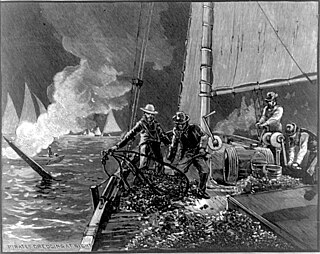
An oyster pirate is a person who poaches oysters. It was a term that became popular on both the West Coast of the United States and the East Coast of the United States during the 19th century.

The Pocomoke River stretches approximately 66 miles (106 km) from southern Delaware through southeastern Maryland in the United States. At its mouth, the river is essentially an arm of Chesapeake Bay, whereas the upper river flows through a series of relatively inaccessible wetlands called the Great Cypress Swamp, largely populated by Loblolly Pine, Red Maple and Bald Cypress. The river is the easternmost river that flows into Chesapeake Bay. "Pocomoke", though traditionally interpreted as "dark water" by local residents, is now agreed by scholars of the Algonquian languages to be derived from the words for "broken ground."
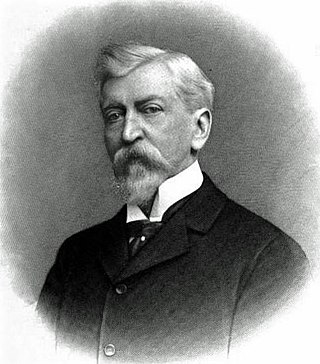
William Evelyn Cameron was a Confederate soldier who became a Virginia lawyer, journalist, and politician. He served as the 39th Governor of Virginia from 1882–1886, elected as the candidate of the Readjuster Party headed by William Mahone.
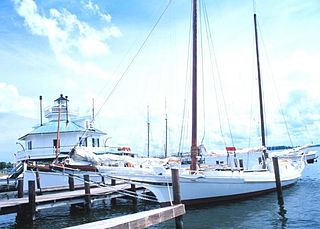
The bugeye is a type of sailboat developed in the Chesapeake Bay for oyster dredging. The predecessor of the skipjack, it was superseded by the latter as oyster harvests dropped.
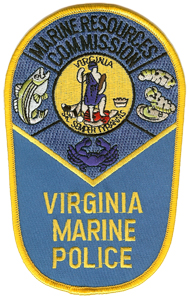
The Virginia Marine Police is the law enforcement division of the Virginia Marine Resources Commission, an agency of the Commonwealth of Virginia, United States.

The Maryland Natural Resources Police (NRP) is the law enforcement arm of the Maryland Department of Natural Resources (DNR), tasked with enforcing laws on the state's public lands and waterways, protecting fish and wildlife, and leading search and rescue efforts. The Natural Resources Police is also the state's maritime homeland security agency.

A fishing dredge, also known as a scallop dredge or oyster dredge, is a kind of dredge which is towed along the bottom of the sea by a fishing boat in order to collect a targeted edible bottom-dwelling species. The gear is used to fish for scallops, oysters and other species of clams, crabs, and sea cucumber. The dredge is then winched up into the boat and emptied. Dredges are also used in connection with the work of the naturalist in marine biology, notably on the Challenger Expedition.
Frolic was a Maryland State Oyster Police Force schooner, part of the force established to enforce state conservation laws designed to protect Maryland's oyster resources when out of state, often New England, dredgers began destroying reefs in the Chesapeake Bay. Later local opposition to licenses turned to open "warfare" in the "oyster wars" when a fleet of state vessels fought "oyster pirates" in armed conflicts. Frolic was built in 1884. The schooner was assigned to Queen Anne's County, Maryland in 1902 and later to the Commission's Second District which included Eastern Bay, and the Miles and Wye Rivers.

Governor R. M. McLane, was a steamboat built in 1884 that served the state of Maryland as an enforcement and survey vessel.

Reginald Van Trump Truitt was an American zoologist, Army officer, and college lacrosse player and coach. He spent his professional career studying the oyster habitat in the Chesapeake Bay. Truitt founded the Chesapeake Biological Laboratory at what is now the University of Maryland Center for Environmental Science. He also served as the first head lacrosse coach at his alma mater, the University of Maryland from 1919 to 1927. Truitt was inducted into the National Lacrosse Hall of Fame in 1959.
Pocomoke Sound is a bay of the Chesapeake Bay that forms part of the boundary between the Eastern Shores of Maryland and Virginia. The Pocomoke River is the largest stream feeding into the Sound, which is bounded by Somerset County, Maryland on the north, Worcester County, Maryland, Accomack County, Virginia, and Beasley Bay on the east, the Chesapeake Bay on the south, and Tangier Sound on the west. Its southwesternmost point may be considered to be Watts Island, Virginia.
Wharton v. Wise, 153 U.S. 155 (1894), is a 9-to-0 ruling by the Supreme Court of the United States, which denied a citizen of the state of Maryland a writ of habeas corpus. The appellant, tried and convicted of illegally harvesting oysters from Pocomoke Sound in the Chesapeake Bay, had argued that his right to fish was protected by an interstate compact and that this compact also barred the state of Virginia from trying him. The Supreme Court disagreed on both counts.

Julia Hamilton was a Maryland State Oyster Police Force schooner, part of the force established to enforce state conservation laws designed to protect Maryland's oyster resources when out of state, often New England, dredgers began destroying reefs in the Chesapeake Bay. Later local opposition to licenses turned to open "warfare" in the "oyster wars" when a fleet of state vessels fought "oyster pirates" in armed conflicts.
Bessie Jones was a Maryland State Oyster Police Force schooner, part of the force established to enforce state conservation laws designed to protect Maryland's oyster resources when out-of-state, often New England, dredgers began destroying reefs in the Chesapeake Bay. Later local opposition to licenses turned to open "warfare" in the "oyster wars" when a fleet of state vessels fought "oyster pirates" in armed conflicts. Bessie Jones was assigned to St. Mary's County, Maryland in 1902 and later to the Hill's Point, Maryland areas.
Giller is a 19th-century term for a person who fishes using a gillnet, as used in the Chesapeake Bay region from the early 19th to the mid-20th centuries. Gillers worked individually or in groups of two or three men using a small boat from which they set and gathered a gillnet. Gillnets first appeared on the Potomac River in 1838 to fish for American shad, and rapidly became the most popular type of fishing gear in the bay region because they allowed the independent fisherman to work with limited resources, following the fish with his boat and net as they moved from place to place in search of food or to spawn. Gillnet fishing in Chesapeake Bay shad fisheries frequently led to conflict among states bordering the bay, with Pennsylvania seiners blaming Maryland gillers for over-harvesting and blocking shad passage upstream into the Susquehanna River, and Maryland gillers blaming Virginia pound-netters for intercepting fish on their northward migration up the bay. Conflicts sometimes erupted into violent confrontations, called "Gillers Wars," during one of which in 1876, a giller in Charles County, Maryland was indicted by the county court for assault with intent to kill the captains of a steamer and a tug. Upon trial he was found not guilty, but his case evidences the extent of the trouble between gillnetters and other bay users that led to involvement by state authorities in regulating fishing and settling disputes involving gillers.
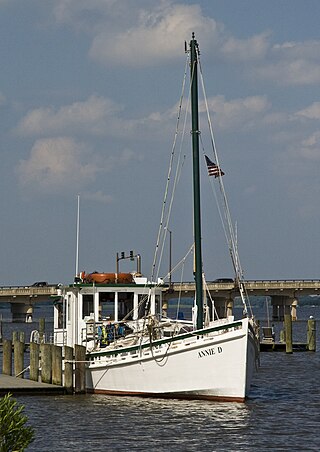
An oyster buy-boat, also known as deck boat, is an approximately 40–90 foot long wooden boat with a large open deck which serviced oyster tongers and dredgers. Similar in function to sardine carriers, buy boats circulated among the harvesters collecting their catches, then delivered their loads to a wholesaler or oyster processing house. This spared the fishermen the task and its downtime, allowing them to catch more oysters. Buy-boats also bought seed oysters, or spat, for planting in oyster beds.
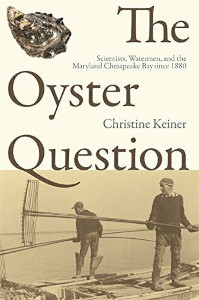
The Oyster Question: Scientists, Watermen, and the Maryland Chesapeake Bay since 1880 is a 2009 book by Christine Keiner. It examines the conflict between oystermen and scientists in the Chesapeake Bay from the end of the nineteenth century to the present, which includes the period of the so-called "Oyster Wars" and the precipitous decline of the oyster industry at the end of the twentieth century. The book engages the myth of the "Tragedy of the Commons" by examining the often fraught relationship between local politics and conservation science, arguing that for most of the period Maryland's state political system gave rural oystermen more political clout than politicians and the scientists they appointed and allowing oystermen to effectively manage the oyster bed commons. Only towards the end of the twentieth century did reapportionment bring suburban and urban interests more political power, by which time they had latched on to oystermen as elements of the area's heritage and incorporated them and the oysters into broader conservation efforts. An important theme is the "intersection[] of scientific knowledge with experiential knowledge in the context of use," in that Keiner "treats the knowledge of the Chesapeake Bay’s oystermen alongside that of biologists." "Through her analysis, Keiner effectively reframes how environmental historians have analyzed histories of common resources and provides a working model for integrating historical and ecological information to bridge the histories of science and environmental history."

The Dancing Molly was a pirate sloop famous during the Oyster Wars for humiliating Virginia Governor William E. Cameron as he personally attempted its capture on 28 February 1883. Crewed solely by "plucky petticoated pirates" in the form of the captain's wife and two daughters, the single-masted sailboat outran the steamers Victoria J Peed and Pamlico while under fire.
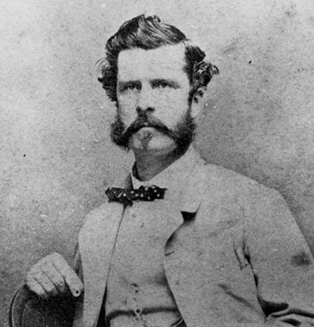
Hunter Davidson was an American engineer, inventor, and naval officer, first serving the United States and then joining the Confederacy during the American Civil War. He later served as the first commander of the Maryland Oyster Police Force during the height of the Oyster Wars.

















